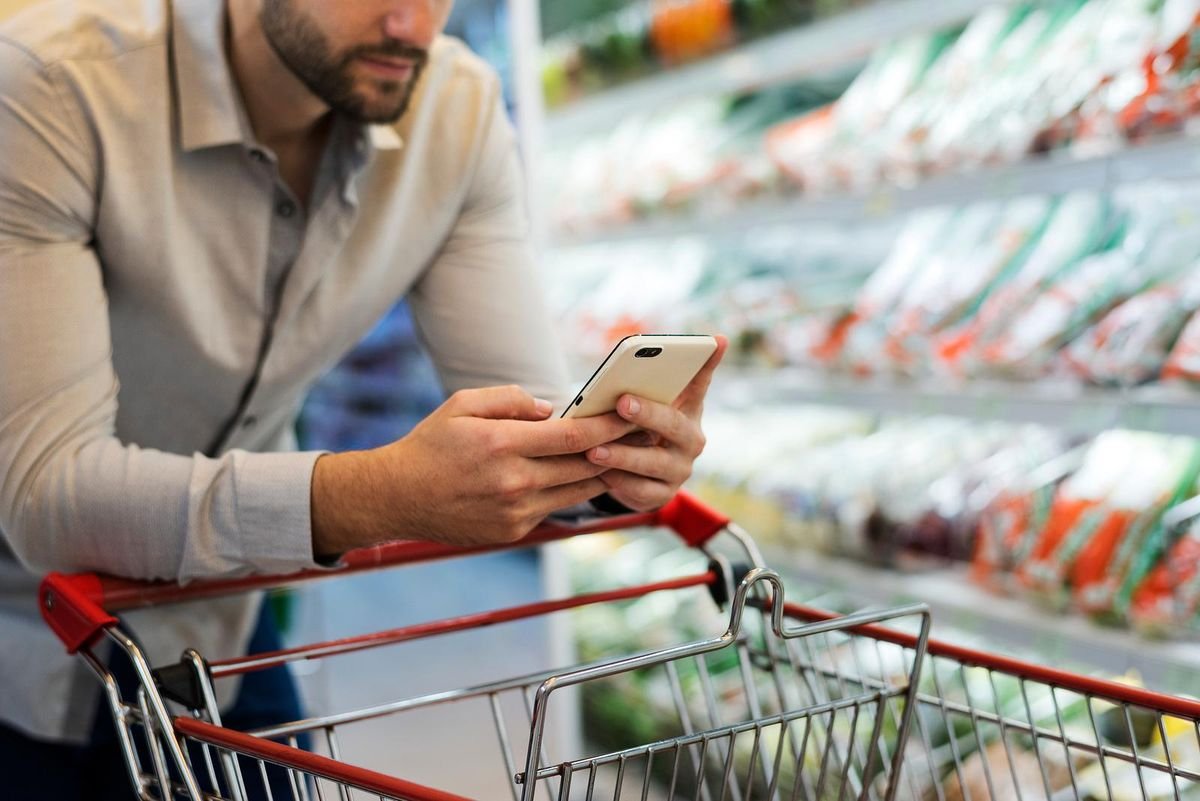ECommerce Marketing Strategies For The Holiday Season
March 7, 2024 | by Winson Yeung

The holiday season presents a golden opportunity for eCommerce businesses to capitalize on increased consumer spending. With the right marketing strategies, online retailers can create engaging campaigns that not only boost sales but also strengthen customer relationships. This article explores various eCommerce marketing strategies tailored for the festive period, focusing on maximizing sales, enhancing customer experience, and ensuring operational readiness for the holiday rush.
Key Takeaways
- Incorporate themed promotional campaigns with bundled gift offers and festive templates to capture the holiday spirit and encourage purchases.
- Segment email subscriber lists and create engaging holiday gift guides, leveraging free shipping as an effective marketing incentive.
- Personalize the shopping experience by understanding customer behaviors and offering tailored customer service and exclusive deals for loyalty.
- Utilize multi-channel marketing, including social media and referral campaigns, and prepare your eCommerce platform for increased traffic.
- Plan your marketing calendar meticulously and boost brand awareness before the peak season to attract last-minute shoppers.
Maximizing Sales with Themed Promotional Campaigns

Creating Bundled Gift Offers
I’ve found that bundling products is a fantastic way to simplify shopping for my customers during the holiday frenzy. By grouping complementary items, I create irresistible offers that not only enhance the shopping experience but also increase the average order value. Here’s how I decide which products to bundle:
- I analyze past sales data to identify popular items.
- I consider customer preferences and feedback.
- I check inventory levels to ensure I can meet the demand.
This strategy has proven to be a hit, especially when I include a themed twist. For example, a ‘Cozy Winter Night’ bundle with a blanket, a book, and hot cocoa mix is always a crowd-pleaser. It’s all about creating that perfect gift package that makes my customers feel they’re getting a great deal while also checking off multiple items from their holiday shopping list in one go.
By offering these curated bundles, I not only provide value but also build a narrative around my products that resonates with the holiday spirit.
Leveraging Festive Templates and Subject Lines
During the holiday season, I’ve found that the right festive templates and subject lines can make a world of difference in email open rates. It’s all about capturing the holiday spirit and enticing customers to engage with your content. Here’s how I approach it:
- I start by choosing templates that resonate with the holiday theme, incorporating elements like snowflakes, ornaments, and warm colors.
- Next, I craft subject lines that are both festive and intriguing, ensuring they stand out in a crowded inbox.
- I also make sure that the website focuses on simplified navigation and fast-loading pages, which are crucial for keeping the momentum going once a customer clicks through.
It’s essential to remember that a mobile-friendly design and high-contrast CTAs are key to increasing engagement and sales.
Finally, I always emphasize the importance of A/B testing. This allows me to refine my approach by understanding what resonates best with my audience, leading to more effective audience engagement and sales growth.
Implementing After-Sales Marketing Techniques
After the holiday rush, it’s crucial to keep the momentum going with effective after-sales marketing. I focus on creating flash sales that not only reward loyal customers but also attract new ones. The excitement generated can extend the holiday buzz and keep engagement high.
Consistency in marketing is key. I make it a point to share offers while reminding customers of their previous purchases. This approach fosters long-lasting relationships and supports the growth of my eCommerce store.
To ensure my offers reach those eager to buy, I leverage various channels like social media, ads, and email marketing. It’s all about keeping my brand visible and top-of-mind. Here’s a simple list of techniques I use to maintain customer interest post-holiday season:
- Engage in remarketing to remind customers of their last purchase
- Send personalized Christmas cards to returning customers
- Analyze post-holiday campaign performance to refine future strategies
By carefully planning and optimizing ad spend, I make certain that my offers are highlighted effectively to my target audience. It’s a delicate balance, but when done right, the results can be significant.
Strategic Email Marketing for the Holiday Rush

Segmenting Subscriber Lists for Targeted Messaging
As I delve into the holiday season’s email marketing strategy, I’ve learned that segmentation is the cornerstone of personalization. By dividing my subscriber list based on specific criteria, I can send more relevant and engaging content. For instance, I segment by demographics, past purchase behavior, and even by how subscribers interact with my previous emails.
Here’s a simple breakdown of how I segment my lists:
- Demographics: Age, location, gender
- Behavior: Past purchases, email engagement
- Preferences: Product interests, communication frequency
By tailoring my campaigns to these segments, I ensure that my messages resonate with each group, increasing the likelihood of conversion.
I constantly refine my approach by analyzing the metrics from each campaign. This data-driven strategy allows me to adapt and improve continuously, ensuring that my email marketing remains effective and relevant.
Crafting Engaging Holiday Gift Guides
As I delve into the holiday season, I’ve learned that gift guides are more than just a list; they’re a strategic tool to elevate my brand and connect with customers on a deeper level. I start by making a plan, marking my calendar with lead times, and determining which products will resonate most with my audience during this festive time.
To truly boost customer engagement, I offer a variety of categories in my gift guides, ensuring there’s something for everyone. It’s not just about promoting products; it’s about creating a narrative that captures the essence of the holidays and aligns with the joy and enchantment that my customers are seeking.
By incorporating customer data into my gift guides, I curate selections that feel personal and thoughtful. This approach has proven to be a powerful way to deepen customer relationships and increase holiday sales.
Here’s a quick checklist to ensure your gift guides hit the mark:
- Review past shopping behaviors to predict this year’s trends
- Segment your email list to send targeted guides
- Use interactive content to engage customers
- Align your guide’s narrative with the holiday spirit
Utilizing Free Shipping as a Marketing Tool
In my experience, offering free shipping can be a game-changer during the holiday season. It’s a powerful incentive that can encourage customers to complete their purchases. However, it’s crucial to balance the allure of free shipping with the profitability of your business. To do this effectively, I’ve learned to set minimum purchase thresholds that encourage larger orders while covering shipping costs.
Here’s a simple strategy I’ve adopted:
- Announce free shipping early to build anticipation.
- Set a reasonable minimum purchase amount.
- Combine free shipping with other promotions, like a free gift or discount code.
- Use free shipping as a reward for customer loyalty or first-time purchases.
Remember, the goal is to make your customers feel valued without compromising your bottom line.
It’s also essential to communicate your free shipping offer clearly. Make sure it’s visible on all marketing materials and throughout the customer journey on your website. By doing so, you can enhance the customer experience and potentially increase your average order value.
Enhancing Customer Experience Through Personalization

Understanding Customer Shopping Behaviors
In my journey to enhance the customer experience, I’ve learned that understanding customer shopping behaviors is crucial. By diving into analytics, I’ve been able to see which products resonate with specific audience segments. For instance, if a particular product is frequently purchased by a certain demographic, it’s a strategic move to tailor marketing efforts towards that group to boost both attention and sales.
Here’s a practical approach I’ve adopted:
- Analyze customer purchase history and browsing data.
- Segment customers based on their behaviors and preferences.
- Develop personalized gift guides, like ‘Tech Lover’s Dream’ or ‘Fitness Enthusiasts’ Essentials’.
By implementing targeted marketing and ecommerce strategies, I’ve seen a significant uplift in sales and brand awareness. Personalized approaches, backed by customer understanding, have been key to setting clear goals and achieving success.
Additional insights such as top-selling categories and the personalization technology I use have been instrumental in making holiday shopping easier and more enjoyable for my customers. Tailored gift suggestions based on data-driven insights have proven to be a game-changer.
Offering Last-Minute Customer Service Solutions
In the eleventh hour of the holiday shopping frenzy, I’ve found that offering last-minute customer service solutions can be a game-changer. It’s about being there for those who’ve waited until the last possible moment to make their purchases. These customers often come with a sense of urgency and a readiness to spend, making them incredibly valuable.
To cater to these last-minute shoppers, I’ve implemented a few key strategies:
- Enhance security with quick responses, clear policies, and streamlined processes.
- Develop a digital marketing strategy for brand awareness, traffic, and sales.
- Leverage social media for engagement and product showcasing.
By ensuring that my team is prepared to handle a surge in customer inquiries, we can turn potential stress into satisfaction and sales. It’s about creating a seamless experience that leaves no customer behind, even those racing against the clock.
I also suggest flash sale strategies and limited-time offers to capture the attention of these shoppers. For example, hosting hourly flash sales on popular items or offering surprise ‘Santa’s Specials’ throughout December can create a sense of urgency that encourages quick purchases.
Providing Exclusive Deals for Loyal Customers
I’ve always believed in the power of appreciation when it comes to my loyal customers. Rewarding them with exclusive offers not only makes them feel valued but also encourages their continued patronage. This holiday season, I’m focusing on creating flash sales that are just for them. The hype around these events not only boosts engagement but also serves as a thank you for their loyalty throughout the year.
Here’s a quick rundown of how I plan to roll out these exclusive deals:
- Announce the flash sale well in advance to create anticipation.
- Offer early access to premium members, ensuring they get first pick.
- Incorporate a sense of urgency to drive conversions.
By providing these exclusive deals, I’m not just selling products; I’m strengthening relationships and building a community around my brand.
It’s crucial to keep in mind that these promotions are not just about immediate sales. They’re a strategic move to maintain visibility and remind my customers that they’re always on my mind, especially during the holidays. After all, people are actively looking for deals, and I want to make sure my brand is front and center.
Leveraging Multi-Channel Marketing Strategies

Integrating Social Media and Referral Campaigns
As I delve into the realm of social media and referral campaigns, I’ve realized the power they hold in amplifying our marketing efforts. Integrating pillars for targeted marketing is not just about blasting our message across different platforms; it’s about building trust in communities where our customers are actively engaging. By aligning the aesthetics and messaging of our social media with our website and newsletters, we create a seamless experience for our audience.
The key to a successful campaign lies in the synchronization of all marketing channels. This ensures that our audience receives a consistent and personal message, regardless of where they encounter our brand.
Here’s a quick rundown of the benefits we reap from a well-integrated campaign:
- Builds an engaged audience
- Reaches buyers at the right time
- Responds to audience behavior signals
- Remains consistent across channels
Moreover, personalizing strategies for sustainable growth and customer loyalty has become a cornerstone of my approach. It’s not just about the immediate sale; it’s about fostering a relationship that encourages customers to return, even after the holiday season has passed.
Optimizing E-commerce Hosting for Peak Performance
As the holiday season approaches, I focus on ensuring that my e-commerce site can handle the surge in traffic without a hitch. Optimizing for mobile shoppers is a top priority, as a significant portion of holiday sales now comes from mobile devices. I’ve learned that a festive user experience can make a big difference, so I’m implementing enhancements like faster load times and easy navigation to holiday deals.
To prepare for the influx of holiday shoppers, I’ve been analyzing my website’s current performance metrics and comparing them to historical traffic data. This helps me anticipate the demand and scale my hosting solutions accordingly. Here’s a quick checklist I’ve put together to ensure my site is ready:
- Ensure fast website load times
- Create easy navigation to holiday deals
- Provide gift wrap options at checkout
- Highlight holiday return policies
By focusing on these key areas, I’m setting up my e-commerce platform to provide a seamless shopping experience that encourages conversions and keeps customers coming back for more.
Lastly, security is non-negotiable. I’m running a thorough security check to protect my customers’ data, because a breach during the holidays could be devastating not just for my sales, but for my brand’s reputation.
Analyzing and Adapting to Spending Trends
As I delve into the holiday season, it’s crucial to stay ahead by analyzing and adapting to spending trends. This year, economic factors such as inflation and stagnation are influencing consumer behavior. Shoppers are tightening their belts, but the picture isn’t uniformly bleak. For instance, while Statista reports over 50% of shoppers in the US and Canada, and 40% in the UK, plan to spend less, Klarna’s data suggests a more nuanced view with only 24% intending to cut back.
It’s essential to understand these variances and adjust marketing strategies accordingly. By doing so, I can better align with customer expectations and drive sales.
To effectively adapt, I’ve compiled a table reflecting recent consumer spending strategies based on the 2023 Deloitte holiday retail survey:
| Strategy | 2022 | 2023 |
|---|---|---|
| Number of Gifts | 9 | 8 |
| Gift Card Spending | $217 | $300 |
| Sales Participation | 49% | 66% |
This table highlights the shift towards more economical gift-giving and the increased reliance on sales events like Black Friday and Cyber Monday. By keeping a pulse on these trends, I can tailor my holiday ecommerce strategies to not only save money but also grow profitably and reduce risk for my company during the Q4 shopping season.
Preparing for the Final Countdown

Planning the Marketing Calendar for Timely Execution
As I delve into the meticulous task of planning my marketing calendar for the holiday season, I’m reminded of the wisdom shared by Common Thread Collective: To make this process easy, build at least four peaks for major moments into your marketing plan for 2024. This approach ensures that my strategy is not just a flat timeline but a dynamic one, with crescendos that capitalize on key shopping dates.
By aligning my marketing efforts with the ebb and flow of the holiday season, I can create a rhythm that resonates with consumers’ readiness to purchase. It’s not just about having a plan; it’s about having a plan that moves with the market.
I’ve taken the liberty to explore the full list of holidays and dates, as suggested by Storyly, to give myself a head start. Here’s a snapshot of my marketing calendar:
- November: Pre-Black Friday buzz
- December: Christmas campaign kickoff
- January: Post-holiday sales
Each phase is designed to engage customers at the right moment, with the right message. It’s a dance of timing and tactics, and I’m poised to lead.
Boosting Brand Awareness Before the Holiday Peak
As the holiday season approaches, I recognize the importance of boosting brand awareness to stand out in the bustling market. With consumers starting their shopping earlier each year, it’s crucial to engage them well before the traditional rush. Last year’s trend continues, with many planning to secure their holiday gifts before November. This shift in consumer behavior presents a unique opportunity for my brand to capture attention early on.
To capitalize on this, I’ve decided to create holiday-themed email marketing campaigns. These campaigns are designed to resonate with the festive spirit, leveraging the season’s emotion to increase engagement and, ultimately, sales.
According to a survey by Klarna, a significant 42% of shoppers intended to purchase gifts earlier than usual. This insight drives my strategy to launch campaigns ahead of time, ensuring my brand remains top-of-mind when consumers are ready to make their purchases. Here’s how I plan to implement this:
- Develop a content calendar to schedule promotions and announcements.
- Craft compelling messages that evoke the holiday cheer.
- Utilize social media to amplify reach and connect with a broader audience.
By proactively planning and executing these strategies, I’m setting the stage for a successful holiday season, aiming to not only meet but exceed customer expectations.
Ensuring Readiness for Last-Minute Shoppers
As the holiday season reaches its zenith, I always remind myself that preparation is key for those last-minute shoppers. These customers, often in a rush, are looking for quick solutions and a seamless shopping experience. To cater to their needs, I ensure that my e-commerce site is optimized for performance, with fast load times and easy navigation to holiday deals.
It’s crucial to have a strategy in place for last-minute shoppers. They are a valuable segment, typically ready to spend but short on time.
I also focus on the finer details, such as providing gift wrap options at checkout and clearly highlighting holiday return policies. These small touches can make a big difference in converting a hurried browser into a satisfied customer.
Here’s a quick checklist I use to stay on top of the game:
- Review current website performance metrics
- Analyze historical traffic data during peak holiday seasons
- Implement user experience enhancements
- Ensure customer service is responsive and ready to assist
By keeping these points in check, I’m confident in my ability to capture those last-minute sales and leave my customers with a positive impression that lasts well beyond the holiday season.
Conclusion
As the holiday season approaches, eCommerce stores have a golden opportunity to capitalize on the festive spirit and boost sales. From developing themed promotional offers to leveraging holiday email marketing strategies, the key is to engage customers with creativity and strategic planning. It’s essential to understand customer behavior during this period and tailor your marketing efforts accordingly, whether through social media, email campaigns, or on-site promotions. Remember, while free shipping and discounts are attractive, they are now expected; it’s the unique and memorable experiences that will set your brand apart. As we’ve explored various strategies, including the 12 Christmas marketing ideas, it’s clear that a well-executed holiday campaign can lead to significant growth for your eCommerce business. So, embrace the holiday cheer, employ these tactics, and watch your sales soar!
Frequently Asked Questions
How can themed promotional campaigns boost holiday sales?
Themed promotional campaigns can enhance the festive atmosphere and attract customers with relevant bundled offers, leveraging the holiday spirit to encourage more purchases.
What are some effective holiday email marketing strategies?
Effective strategies include segmenting your email list for targeted messaging, crafting engaging holiday gift guides, and offering incentives like free shipping to increase engagement.
How can personalization enhance the customer experience during the holidays?
Personalization can be achieved by understanding customer shopping behaviors, offering tailored customer service solutions, and providing exclusive deals to loyal customers, making their shopping experience more relevant and enjoyable.
Why is multi-channel marketing important during the holiday season?
Multi-channel marketing is crucial as it allows businesses to reach customers through various platforms, integrating social media, referral campaigns, and ensuring the ecommerce site is optimized for peak performance.
How should businesses prepare for the final countdown of the holiday season?
Businesses should plan their marketing calendar for timely execution, boost brand awareness before the holiday peak, and ensure they are ready to accommodate last-minute shoppers with quick service and offers.
What after-sales marketing techniques can be used to maintain customer engagement post-purchase?
After-sales techniques include follow-up emails, special offers for future purchases, and personalized recommendations based on past shopping behavior to keep the customer connected with the brand.
RELATED POSTS
View all


